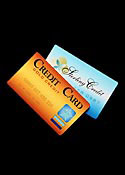Click to enter the mileage mall, a cyberspace bazaar where everything from flowers to golf clubs to cruises is bought and sold in the mall’s own currency — frequent flyer miles.
At American Airlines’ AAdvantge e-shopping site, more than 200 vendors — including Bergdorf Goodman, Home Depot and Petco — offer bonus miles to shoppers. Like the currencies of countries, the value of vendors’ currencies fluctuates as well. At the Apple Store, a dollar spent earns just one mile, while Hallmark pays 10 miles for each $1 in sales. Continental’s OnePass program allows members to earn two miles for every $1 paid for electricity from Gexa Energy of Houston. Miles are even available for the civic-minded: Northwest Airlines’ WorldPerks members can donate $50 to the Red Cross and receive 500 miles in return.
Since American Airlines pioneered its frequent flyer program 26 years ago, airline loyalty programs have blossomed into a unique and thriving industry, in part by teaming up with hotels, rental car companies and credit cards. These days, dozens of retailers are tied into the programs with their own frequent buyer schemes.
But while the programs are getting bigger, they don’t always provide a big payout for retailers. For the most part, the partnerships have become a defensive measure as more and more retailers develop competing programs, according to Wharton marketing faculty. “The programs are growing but they are not necessarily successful,” says Wharton marketing professor Xavier Dreze. Setting them up “is now just an added cost of doing business, not a true loyalty program. The retailer does not have loyalty from the customer; the airline has it.”
According to Wharton marketing professor Barbara Kahn, despite the growing array of goods and services now available through the mileage economy, consumers are willing to navigate the complexity of the programs to hunt down a deal. “Consumers are getting sophisticated with regard to these loyalty programs. Many people now participate in at least one, or at the very least have heard about them and understand the way they work.”
Even though she travels frequently, Kahn says she only recently signed up for her first hotel loyalty card. “Now that I understand the benefits, I’ve signed up for several and regret that I didn’t do it sooner. There are few costs and potentially real benefits.” The main cost is the likelihood of being bombarded with email and mailings after providing personal data to a company loyalty program, Kahn adds. “But to the degree that [the information] is targeted, and perhaps actually offering something of value, even this might not seem too costly.”
Targeting High Household Incomes
Frequent flyer industry analyst Tim Winship, publisher of the web site frequentflyer.com, says airlines are profiting off partnerships in which retailers buy miles from the carrier to pass along as a bonus to their own customers. He estimates that American Airlines brings in around $1 billion a year in sales of its miles to partners. “With the financial issues the airlines are facing, that revenue is more critical than ever.”
In addition to generating revenue, the sale of frequent flyer miles is highly profitable for airlines because they are essentially selling a seat that probably would have gone empty anyway. “The real cost of an airline award seat is really just the incremental cost of carrying one more passenger, maybe a little extra fuel, a bag of pretzels and a soda — literally. That’s probably somewhere around $20,” Winship says.
As for retailers, the purchase of miles amounts to a marketing expense, Winship adds. Retailers are essentially buying miles for their online programs in lieu of mass market promotions, which according to Winship, are less efficient than the airline tie-ins. Indeed, these tie-ins tend to target good customers. “The frequent flyer program participant demographic is a very attractive one from a retailer’s standpoint,” says Winship. “People who travel a lot have high household incomes. This gives a highly desirable segment of the consumer universe some additional incentive to purchase through” one particular retailer as opposed to that retailer’s competitor.
Winship also points out that airlines have now reconceptualized their frequent flyer programs to extend beyond regular travelers, as more and more consumers rack up their miles by using an affiliated credit card or through other partnership arrangements with the airlines. “It used to be that consumers said, ‘I don’t fly often enough so there’s no sense in my participating in these programs.’ Now most people understand you can earn most, or all, of your frequent flyer miles through non-travel related activities…. There’s very little out there that you can’t earn frequent flyer miles for.”
According to Wharton marketing professor Stephen J. Hoch, very few retailers have successfully built their own loyalty programs. The hotel and airline industries, he says, are better suited to profit off these programs because airlines and hotels are offering seats and rooms that, in most cases, cost little or nothing to provide — as opposed to hard inventory. At the same time, there is a big spread between light and heavy users in the travel industry, making the high users easy to identify and worth cultivating.
Grocery stores, for example, do not benefit as much from loyalty programs because there is not that great a spread in the amount of money spent by heavy and light food shoppers. Although grocery chains offer loyalty programs, Hoch says, most competing stores match the discounts. Thus, there is little reason for consumers to be loyal to one store over another. “Many people have two, three, four of those cards in their wallet. Anybody who is smart has one just to get the discount,” says Hoch.
While it seems contradictory, Hoch says heavy users are actually more price-sensitive to products because they have more experience with, and knowledge about, the offering. “For them, it pays to be price-sensitive and to look for deals because they buy so much.” When it comes to hotel and airline travel, however, the heavy users are not so price sensitive, usually because their employer is actually paying the fare. They will make their choice based on convenience and service, giving airlines and hotels the ideal subject for a loyalty program — a heavy user who is also price insensitive. In addition, airline and hotel programs are successful because they are connected to travel. “Travel is sexy in a way that a rebate will never be sexy,” notes Winship.
Hoch says he has a credit card that provides rewards points for merchandise. “It’s hard to even get excited about it. There really are not that many programs you can think of that create loyalty.”
The 10th Cup of Coffee
As for the notion that retailers can use information gathered from frequent buyer programs to target customers effectively, this may be a myth, according to Hoch. A lot of retailers don’t have the ability to “use the information to their advantage. After 15 or 20 years, there are just not many examples of [a retailer] who is doing a great job with its loyalty program.” Still, he says, programs persist. “They’re not dying out. They’re vestigial. They don’t really cost that much to do once you have bought the system. And since [retailers] are not spending a lot of time analyzing it … I think of it as a defensive measure.”
He notes there are retailers with strong customer loyalty who do not offer loyalty programs — for example, Trader Joe’s and Starbucks. “You don’t see Starbucks giving away the 10th cup of coffee free. A lot of these are just a lame way of giving a heavy user a discount. That’s not necessarily bad, because heavy users are more price-sensitive. You want to give them discounts, but the question is, does it create loyalty if everybody is doing the same thing for that heavy user?”
According to Eric K. Clemons, Wharton professor of operations and information management, true loyalty does not come easily and it is not always clear how or why it happens. “I think loyalty is more complicated today,” he says. “How much of it is about touchy-feely, silly things? How much of it is that it just works for you?”
Loyalty, he says, is based on learning enough about customers to respond to what it is they need most and then inducing them to buy more, “not loyalty based on a logo or loyalty based on a discount,” he adds.
Clemons points to an extreme example. More than a dozen years ago he stayed at the InterContinental Hotel in London. “It was awful,” he recalls. Clemons submitted a detailed review of his stay chronicling all that had gone wrong. When he checked out, the manager for guest relations asked if she could discuss his experience at the hotel. Clemons did return to the hotel and, from then on, the staff had his profile down. For example, when his young daughter was staying with him, he was given a room without a balcony so the child would not be in danger of falling off the ledge. Clemons says he now stays somewhere in the InterContinental chain 60 nights a year
The manager of guest relations who followed up on Clemons, Rosalind Pearson, is now head of the front office at the InterContinental in Chicago. She says she flags conscientious complainers because “if they care enough to bring it to your attention, then it is important to turn things around for them and turn that to strength. I’ve followed up on quite a few regular guests who have had problems. They can end up being your most loyal customers.”
Wharton’s Dreze, who has written extensively about loyalty programs, says he is now developing new research exploring the importance of rewards as recurring goals. He points out that successful loyalty programs need to carefully develop their award system to keep consumers eager to select a new goal and plunge back into striving to earn new points after they achieve a reward. “If I have the goal to learn French, I learn it and it is done,” he says. “But with a loyalty program, as soon as I get one free cup of coffee, I can start on the next one.”
Dreze says his research suggests that once people experience a rewards redemption, they are even more likely to work harder to do what it takes to cash in again. “Unless you work at it, you don’t know how likely you are to be successful,” says Dreze. “But once you succeed you think, ‘Hey, I enjoy this. Let’s do it again.'”
Dreze warns that loyalty programs must carefully weigh the “price” of their rewards. A free trip every two or three years is not enough to keep a consumer engaged with the program. “That’s the problem with the small flyer. They never get to the point where they get the reward. That’s where all the partners can come in,” says Dreze. “The reward needs to come often enough so that there is reinforcement. At the same time, it can’t be too close. Then it wouldn’t be meaningful.”



